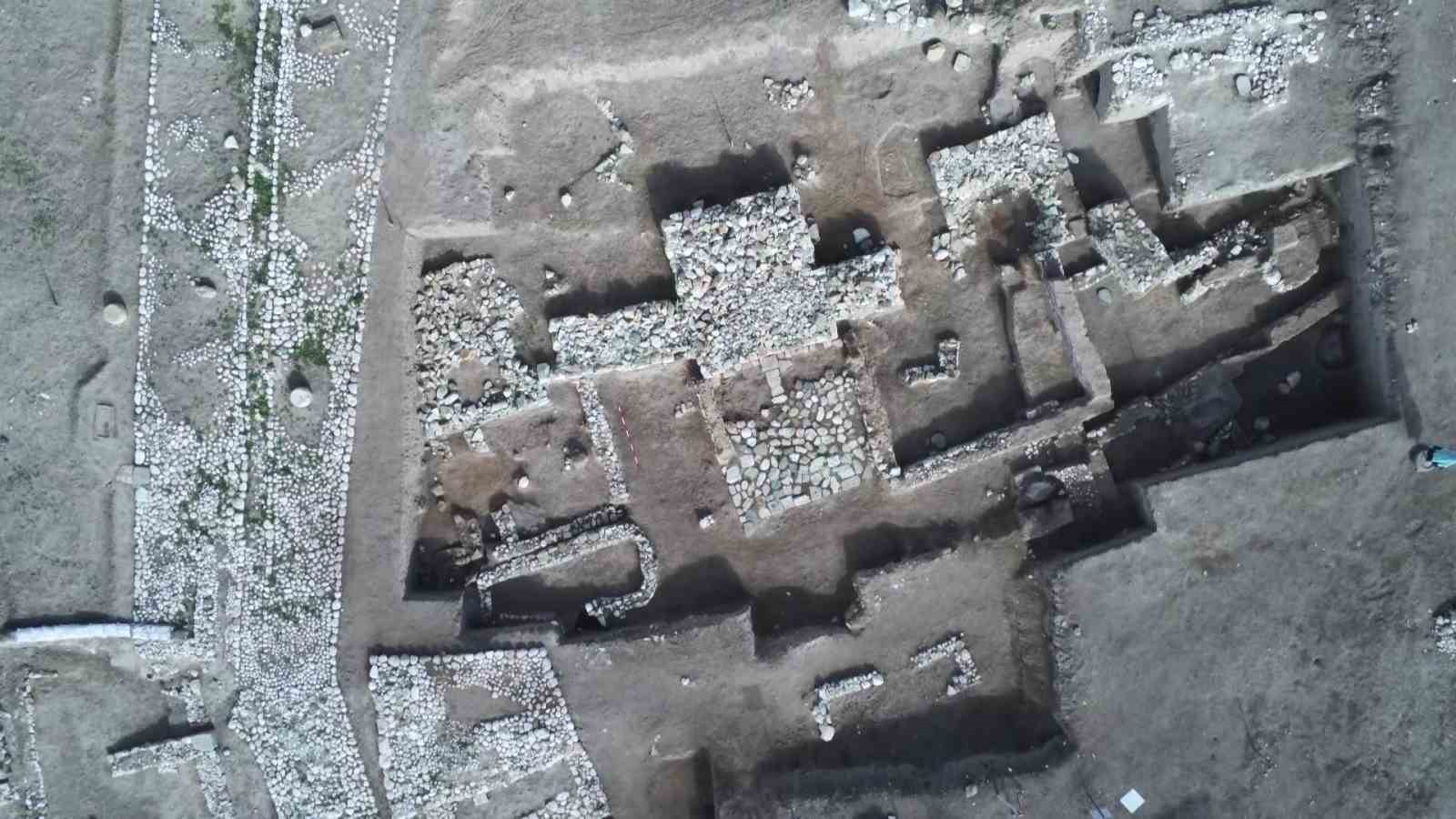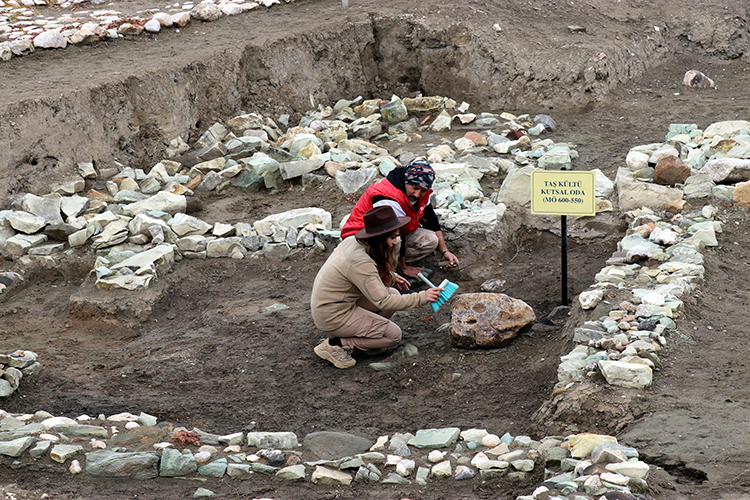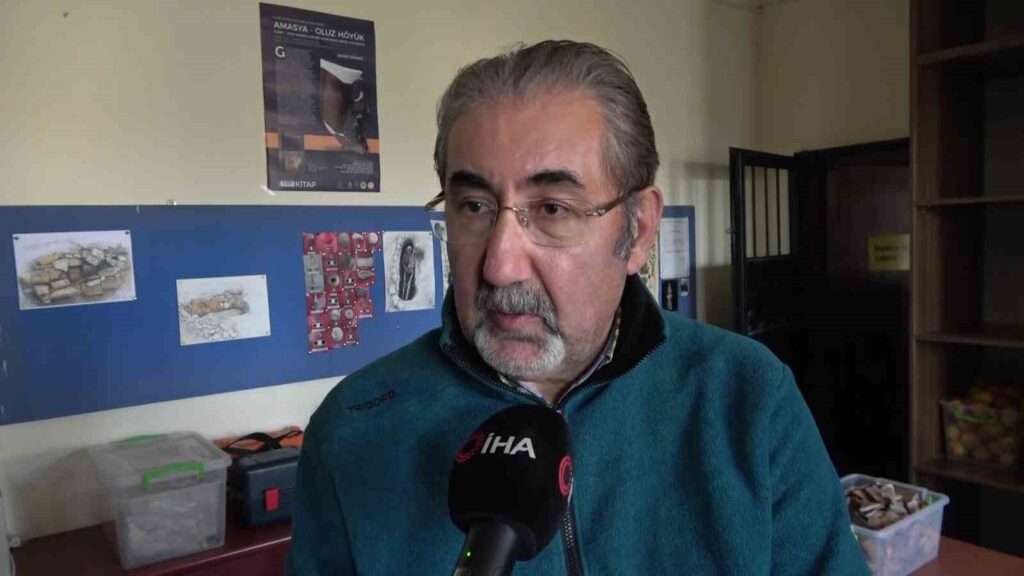
Scientists are investigating the mysterious stones used in the construction of the temples at Oluz Mound
Scientists are examining the light green mysterious stones that were predominantly used in the construction of the temples uncovered during the Amasya Oluz Mound excavations.
Similar volcanic rock fragments, referred to as fine-grained tuff, were found at an ancient quarry located 10 kilometers away in the village of Doğantepe.
Experts will collect samples from the mound and the rock fragments at the quarry to conduct laboratory research.
The excavation team recently uncovered the 2,600-year-old lost Kubaba sacred site.
📣 Our WhatsApp channel is now LIVE! Stay up-to-date with the latest news and updates, just click here to follow us on WhatsApp and never miss a thing!!

The head of the excavation, Prof. Dr. Şevket Dönmez, stated that 90% of the walls of the temple’s three altars are made up of volcanic rock fragments known as fine-grained tuff. He said, “We understood that this stone was preferred in 90% of the construction of the sacred site. Its light weight makes it very practical for processing. In terms of color, it also integrates well with the landscape. We have determined that the structures were built with this stone, which is considered sacred.”
Prof. Dr. Ali Gürel from Niğde Ömer Halisdemir University noted in his geoarchaeological research around Oluz Mound that the source region of this stone, which is lighter than other stones, has been identified in the village of Doğantepe, located 10 kilometers away.

Prof. Dr. Dönmez added, “We have determined that this special stone used in Oluz Mound has also been utilized in house foundations up to the present day after the mound became deserted. The discovery of an ancient quarry that has been in use from the Ancient Age to the present has also been made.”
“We will announce the definitive results.”
Prof. Dönmez explained that the same stones have been observed in layers from the Hittite period, dating back 3,500 years, as well as in Phrygian, Median, Persian, and Hellenistic layers. He stated, “The similarities visible to the human eye are very clear. They indicate a relationship between the two regions. The next step will be to collect samples from the ancient quarry and Oluz Mound to conduct characterization and matching studies in laboratories. We will announce the definitive results to the public.”
Cover Photo: IHA
You may also like
- A 1700-year-old statue of Pan unearthed during the excavations at Polyeuktos in İstanbul
- The granary was found in the ancient city of Sebaste, founded by the first Roman emperor Augustus
- Donalar Kale Kapı Rock Tomb or Donalar Rock Tomb
- Theater emerges as works continue in ancient city of Perinthos
- Urartian King Argishti’s bronze shield revealed the name of an unknown country
- The religious center of Lycia, the ancient city of Letoon
- Who were the Luwians?
- A new study brings a fresh perspective on the Anatolian origin of the Indo-European languages
- Perhaps the oldest thermal treatment center in the world, which has been in continuous use for 2000 years -Basilica Therma Roman Bath or King’s Daughter-
- The largest synagogue of the ancient world, located in the ancient city of Sardis, is being restored











Leave a Reply